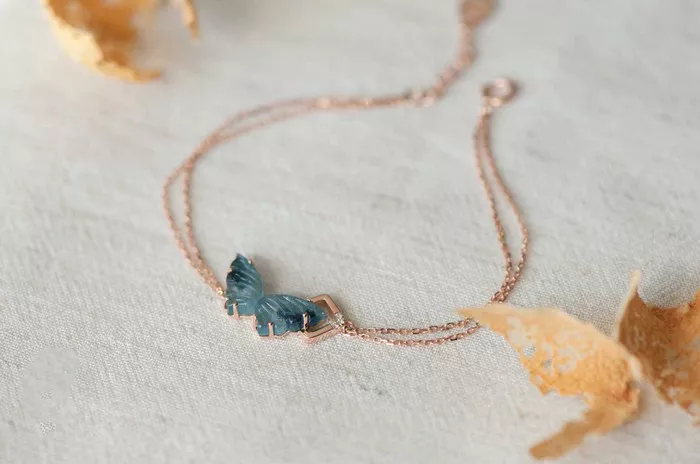Tourmaline, a fascinating gemstone admired for its stunning array of colors, stands out in the world of gemology due to its incredible variety and complexity. Among the many hues tourmaline can exhibit, there exists a rare color that captures the imagination of gem enthusiasts and collectors alike. This article delves into the allure, science, and history of this rarest tourmaline color, providing a comprehensive understanding of what makes it so exceptional.
Introduction to Tourmaline
Tourmaline is a crystalline boron silicate mineral compounded with elements such as aluminum, iron, magnesium, sodium, lithium, or potassium. Its chemical composition is highly variable, leading to the formation of different colors. This variety, combined with the mineral’s pleochroism (the ability to show different colors when viewed from different angles), makes tourmaline a particularly captivating gemstone.
Historical Context
Tourmaline has been prized since antiquity. The name “tourmaline” comes from the Sinhalese words “turmali” or “toramalli,” which means “mixed gems.” Historically, tourmaline was often confused with other gemstones due to its wide color range. For example, the famed “Caesar’s Ruby” in the Russian crown jewels is actually a red tourmaline.
The Spectrum of Tourmaline Colors
Tourmaline is known for its rainbow-like color spectrum. Some of the most common colors include:
Black (Schorl): The most abundant type, often used in jewelry.
Green (Verdelite): A common variety, ranging from light to dark green.
Pink to Red (Rubellite): Valued for its vibrant, warm hues.
Blue (Indicolite): A rare and highly sought-after variety.
Colorless (Achroite): Extremely rare and almost pure in form.
Multicolored: Specimens with multiple colors, such as watermelon tourmaline, are highly prized.
The Rarest Color: Paraíba Tourmaline
Among all these varieties, the Paraíba tourmaline, first discovered in the late 1980s in the Paraíba state of Brazil, stands out as the rarest and most extraordinary. Its vivid neon blue to green color, caused by trace amounts of copper and manganese, is unlike any other tourmaline.
See Also: Most Expensive Tourmaline Color
The Discovery of Paraíba Tourmaline
The Brazilian Connection
The first Paraíba tourmalines were discovered by a determined miner named Heitor Dimas Barbosa, who spent years digging in the hills of Paraíba state. The find revolutionized the gem world, introducing a new standard of beauty and rarity.
Expansion Beyond Brazil
Subsequent discoveries of similar tourmalines in Nigeria and Mozambique have expanded the sources of this gem. However, despite these new finds, the original Brazilian Paraíba tourmalines remain the most prized due to their unparalleled color intensity.
Geological Formation
Chemical Composition
The striking colors of Paraíba tourmalines are primarily due to the presence of copper (Cu) and, to a lesser extent, manganese (Mn). This unique chemical composition is rare in the natural world, requiring specific geological conditions to form.
Mining Conditions
The mining of Paraíba tourmalines is challenging and labor-intensive. The gems are typically found in pegmatite deposits, requiring extensive excavation and often occurring in small pockets, further contributing to their rarity.
Characteristics of Paraíba Tourmaline
Color and Pleochroism
The neon blue to green color of Paraíba tourmaline is its most distinguishing feature. The gemstone’s pleochroism can result in different color intensities when viewed from different angles, adding to its visual appeal.
Clarity and Inclusions
While clarity is a valued trait in many gemstones, inclusions in Paraíba tourmalines are often accepted due to the gem’s rarity and color intensity. These inclusions can also help gemologists verify the authenticity and origin of the stone.
Cut and Carat Weight
Paraíba tourmalines are typically cut to maximize their unique color and brilliance. Due to the rarity and high value of the rough material, gemstones over 5 carats are exceptionally rare and command premium prices.
The Market for Paraíba Tourmaline
Value and Pricing
Paraíba tourmalines are among the most expensive gemstones on the market. Prices can range from a few thousand to tens of thousands of dollars per carat, depending on color intensity, clarity, and origin.
Demand and Collectability
The demand for Paraíba tourmaline is driven by both collectors and jewelry designers. Its unique color and rarity make it a highly sought-after gem in high-end jewelry.
Scientific Analysis and Authentication
Gemological Testing
Gemological laboratories use advanced techniques such as spectroscopy, chemical analysis, and inclusion studies to authenticate and differentiate Paraíba tourmalines from other similar gemstones.
Challenges in Identification
Due to the high value of Paraíba tourmalines, there is a risk of misidentification and fraud. Accurate identification requires expertise and often the use of sophisticated equipment.
Ethical and Sustainable Mining Practices
Environmental Impact
Mining for tourmaline, like all gemstone mining, has environmental impacts. Responsible mining practices are essential to minimize ecological damage and ensure sustainable extraction.
Social Responsibility
Ensuring fair labor practices and community benefits in mining regions is crucial. Efforts are being made to improve conditions for miners and local communities, particularly in regions like Brazil, Nigeria, and Mozambique.
The Future of Paraíba Tourmaline
Potential New Discoveries
While existing mines continue to produce Paraíba tourmaline, the potential for new discoveries remains. However, the rarity of the specific geological conditions required means new finds are likely to be limited.
Advances in Gemology
Ongoing research in gemology may lead to new methods for identifying, enhancing, and understanding Paraíba tourmalines. Technological advancements could also improve mining efficiency and reduce environmental impacts.
Conclusion
The allure of the rarest tourmaline color, exemplified by the mesmerizing Paraíba tourmaline, is a testament to the wonders of natural gem formation. Its vivid colors, rarity, and the story of its discovery continue to captivate gem enthusiasts and collectors around the world. As we deepen our understanding of this extraordinary gemstone, we not only appreciate its beauty but also the intricate and delicate processes that bring such marvels to light.
The Paraíba tourmaline is more than just a gemstone; it is a symbol of nature’s artistry, the dedication of miners and gemologists, and the ever-evolving appreciation for rare and beautiful objects. Whether set in an exquisite piece of jewelry or held in a collector’s hand, the Paraíba tourmaline remains a shining example of the incredible diversity and richness of the mineral world.


